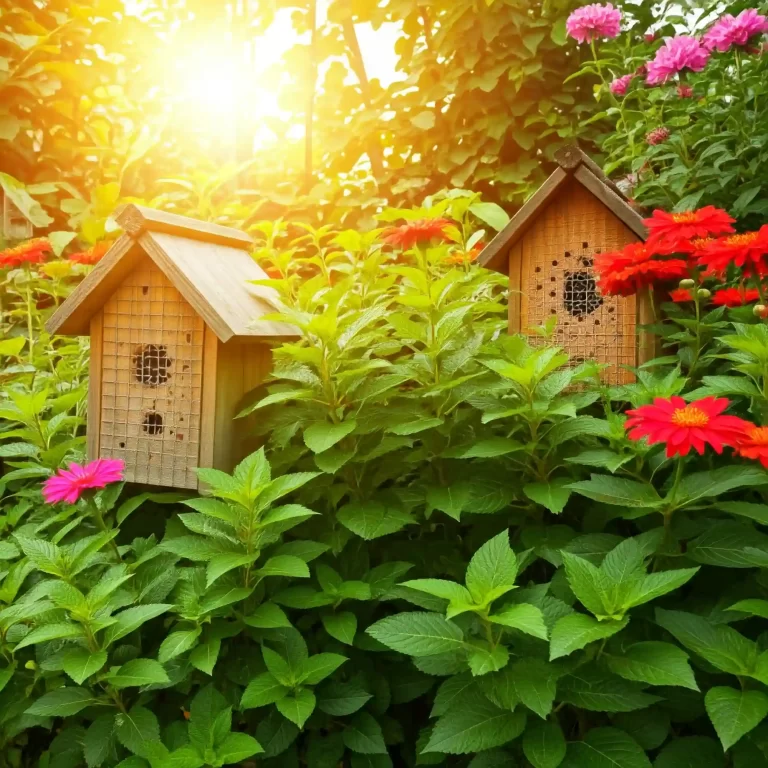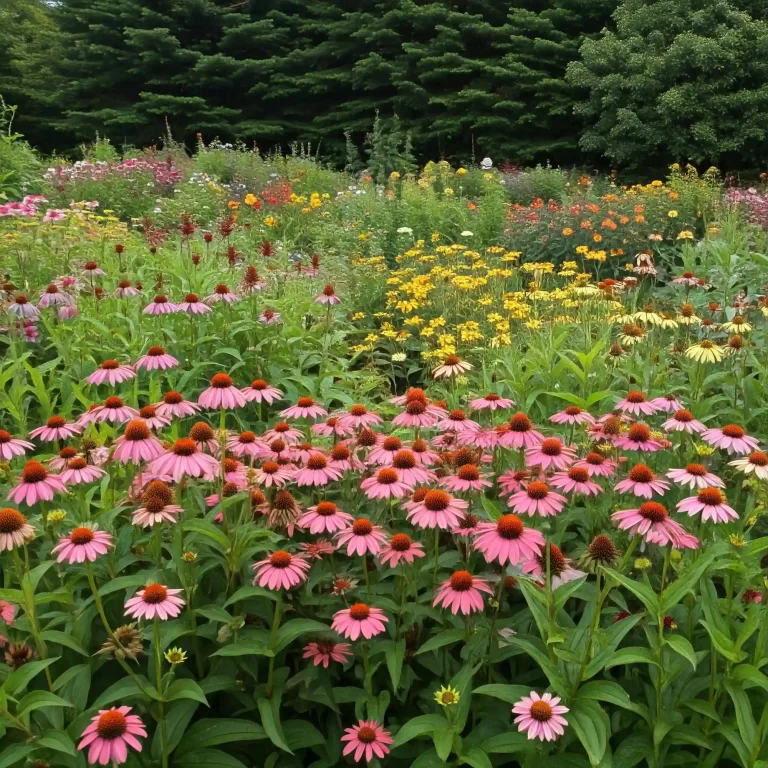Key Takeaways:
- Beneficial insects are nature’s pest control army, feasting on the critters that munch on your prized plants.
- By creating a welcoming habitat, you can attract these helpful bugs and create a balanced ecosystem in your garden.
- From ladybugs to lacewings, there’s a whole host of beneficial insects waiting to take up residence in your garden, keeping your veggies and flowers happy and healthy.
- It’s a win-win for you and the environment – fewer chemicals, a healthier garden, and a boost for biodiversity.
Let’s face it, nobody enjoys battling pesky aphids, caterpillars, or whiteflies that seem to appear overnight and devour your garden. But what if there was a way to combat these critters without resorting to harsh chemicals? Enter the fascinating world of beneficial insects. These natural predators and parasitoids are the unsung heroes of the garden, keeping pest populations in check and promoting a healthy ecosystem.
Who are these Beneficial Beasties?
Think of beneficial insects as your garden’s very own SWAT team. They come in a variety of shapes and sizes, each with a specific role to play in pest control. Here are some of the most common beneficial insects you might encounter:
- Ladybugs: These cheerful little beetles with polka-dot shells are aphid assassins, devouring hundreds of these sap-sucking pests throughout their lifecycle.
- Praying Mantises: These green, alien-looking predators are masters of camouflage, waiting patiently for unsuspecting prey like caterpillars and grasshoppers.
- Lacewings: These delicate, green-winged insects with large eyes are both adults and larvae are ferocious aphid hunters.
- Parasitic Wasps: These tiny wasps are like miniature assassins, laying their eggs inside the bodies of pest insects, effectively dooming the next generation of the unwanted visitors.
- Ground Beetles: These nocturnal hunters patrol the soil, feasting on slugs, snails, and other creepy crawlies that munch on your plants’ roots.
Benefits Beyond Pest Control
The advantages of attracting beneficial insects go far beyond simply keeping your prized plants pest-free. Here are some additional benefits:
- Reduced Reliance on Pesticides: By encouraging beneficial insects, you can minimize your reliance on harsh chemicals that can harm the environment and beneficial insects themselves.
- A More Balanced Ecosystem: A thriving population of beneficial insects creates a natural balance in your garden, keeping pest populations under control and promoting biodiversity.
- Improved Plant Health: When pests are kept at bay, your plants can focus their energy on healthy growth and producing delicious fruits and vegetables.
Creating a Haven for Helpful Heroes
So, how do you entice these beneficial beasties to take up residence in your garden? Here are some simple yet effective strategies:
1. Plant a Pollinator Paradise
Beneficial insects need a constant supply of food, just like any other creature. Planting a variety of flowering plants throughout your garden provides a buffet of nectar and pollen for adult beneficial insects. Here are some particularly attractive options:
- Herbs: Dill, fennel, cilantro, and chives are all magnets for beneficial insects.
- Flowers: Cosmos, sunflowers, yarrow, and marigolds are all excellent choices.
- Native Plants: Don’t forget the power of native plants! These often provide the perfect habitat and food source for beneficial insects that are already adapted to your local climate.
Flowers that Attract Beneficial Insects
| Flower | Beneficial Insects Attracted |
|---|---|
| Yarrow | Lacewings, parasitic wasps, ladybugs |
| Cosmos | Butterflies, hoverflies, ladybugs |
| Chives | Hoverflies, ladybugs, parasitic wasps |
| Marigolds | Lacewings, parasitic wasps, nematodes (beneficial soil dwellers) |
2. Diversity is Key
Monoculture gardens, with just one type of plant, are not very appealing to beneficial insects. Instead, aim for a diverse planting scheme with a variety of flowers, herbs, and vegetables. This creates a more balanced ecosystem and provides a wider range of food sources for your beneficial friends.
3. Let it Loose a Little
Resist the urge to have a perfectly manicured garden. Leaving some areas a little wild, with patches of tall grass and dead leaves, provides valuable overwintering habitat for beneficial insects like ladybugs and lacewings.
4. Water Wisely
Just like any living creature, beneficial insects need a source of water. Consider adding a shallow birdbath or creating a small puddling area to provide them with a place to drink and rehydrate. These water sources should be placed in sunny areas, as insects are more active in warm temperatures. Additionally, avoid using chemicals or pesticides near these water sources, as they can be harmful to beneficial insects.
5. Ditch the Pesticides
This might seem obvious, but it’s crucial. Pesticides don’t discriminate – they kill both good and bad bugs. If you’re serious about attracting beneficial insects, ditch the harsh chemicals and opt for more natural pest control methods like handpicking pests or using insecticidal soap.
6. Welcome the Weird and Wonderful
Some creatures that might seem a little creepy, like spiders and toads, are actually beneficial for your garden. Spiders are natural predators of many garden pests, and toads love to feast on slugs and snails.
7. Be Patient, Grasshopper
Creating a thriving population of beneficial insects takes time and patience. Don’t get discouraged if you don’t see results overnight. Keep following these tips, and over time, you’ll start to see a natural balance emerge in your garden.
Living in Harmony with Nature
By attracting beneficial insects, you’re not just creating a pest-free paradise for your plants, you’re also contributing to a healthier ecosystem. These tiny creatures play a vital role in the natural world, and by providing them with a welcoming habitat, you’re doing your part to promote biodiversity and a more balanced environment.
Beyond the Basics: Advanced Strategies for the Keen Gardener
For the keen gardener who wants to take their beneficial insect haven to the next level, here are some additional strategies:
- Bug Hotels: Providing bug hotels made from natural materials like wood, bamboo, and pinecones creates additional overwintering habitat for beneficial insects.
- Nesting Boxes: Certain beneficial insects like solitary bees and ladybugs can be attracted by providing nesting boxes made from wood or hollow bamboo.
- Attract Hoverflies: Hoverflies, which resemble small wasps but are harmless, are excellent aphid predators. Planting dill, fennel, and angelica will attract these beneficial insects.
Identifying Beneficial Insects
Knowing the difference between a friend and foe can be tricky sometimes. Here are some resources to help you identify beneficial insects in your garden:
- The Xerces Society: https://www.xerces.org/pollinator-resource-center – This non-profit organization provides a wealth of information on beneficial insects, including identification guides.
- The National Wildlife Federation: https://www.nwf.org/ – The National Wildlife Federation also offers resources on identifying beneficial insects.
Conclusion: A Garden Buzzing with Life
By incorporating these strategies, you can transform your garden into a haven for beneficial insects. With a little planning and patience, you’ll be rewarded with a thriving ecosystem that’s not only beautiful but also naturally pest-free. So, embrace the power of these tiny allies, and watch your garden flourish with the buzz of life!


